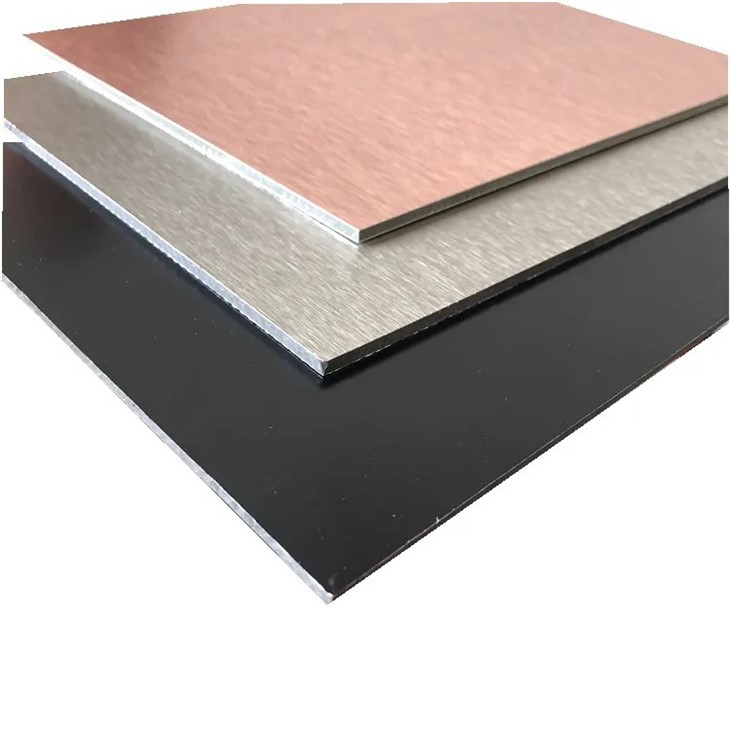Alucobond cladding has gained significant popularity in the construction industry due to its versatility, durability, and aesthetic appeal. As a leading supplier of Alucobond cladding, I often receive inquiries about its suitability for residential buildings. In this blog post, I will explore the various aspects of using Alucobond cladding on residential properties, discussing its benefits, considerations, and potential applications.
Benefits of Using Alucobond Cladding on Residential Buildings
One of the primary advantages of Alucobond cladding is its exceptional durability. Made from a composite of aluminum sheets bonded to a polyethylene core, Alucobond panels are highly resistant to weathering, corrosion, and impact. This makes them an ideal choice for residential buildings, which are exposed to a variety of environmental conditions over time. Whether it's harsh sunlight, heavy rain, or strong winds, Alucobond cladding can withstand the elements and maintain its structural integrity for many years.


In addition to its durability, Alucobond cladding offers a wide range of design possibilities. The panels are available in a variety of colors, finishes, and textures, allowing homeowners to create a unique and personalized look for their homes. Whether you prefer a sleek and modern appearance or a more traditional and rustic style, Alucobond cladding can be customized to meet your specific design preferences. Moreover, the panels can be easily fabricated and installed, making them a cost-effective and efficient solution for residential construction projects.
Another benefit of using Alucobond cladding on residential buildings is its energy efficiency. The panels have excellent insulation properties, which can help to reduce heat transfer and lower energy consumption. By keeping the interior of the home cooler in the summer and warmer in the winter, Alucobond cladding can help to reduce heating and cooling costs and make the home more comfortable for its occupants. Additionally, the panels can help to improve the overall energy performance of the building, which can be beneficial for both the environment and the homeowner's wallet.
Considerations When Using Alucobond Cladding on Residential Buildings
While Alucobond cladding offers many benefits for residential buildings, there are also some considerations that homeowners should keep in mind before choosing this type of cladding. One of the main considerations is the cost. Alucobond cladding is generally more expensive than other types of cladding materials, such as vinyl or wood. However, the long-term durability and energy efficiency of the panels can help to offset the initial cost, making them a worthwhile investment in the long run.
Another consideration is the installation process. Alucobond cladding requires professional installation, as it involves specialized tools and techniques. Homeowners should ensure that they hire a qualified and experienced contractor to install the panels to ensure that they are installed correctly and safely. Additionally, the installation process can be time-consuming, which may cause some inconvenience to the homeowner during the construction period.
Finally, homeowners should also consider the maintenance requirements of Alucobond cladding. While the panels are relatively low-maintenance, they do require regular cleaning and inspection to ensure that they remain in good condition. Homeowners should follow the manufacturer's recommendations for cleaning and maintenance to ensure that the panels last as long as possible.
Potential Applications of Alucobond Cladding on Residential Buildings
Alucobond cladding can be used in a variety of applications on residential buildings. One of the most common applications is for exterior cladding. The panels can be used to cover the entire exterior of the home, providing a sleek and modern appearance. Alternatively, they can be used to accentuate specific areas of the home, such as the facade or the porch.
Another potential application of Alucobond cladding is for interior decoration. The panels can be used to create feature walls, ceilings, or partitions, adding a touch of style and sophistication to the interior of the home. Additionally, the panels can be used in commercial applications, such as retail stores, restaurants, and offices, to create a unique and memorable look.
Conclusion
In conclusion, Alucobond cladding can be a great choice for residential buildings. Its durability, design versatility, energy efficiency, and potential applications make it a popular option for homeowners who are looking for a high-quality and long-lasting cladding solution. However, homeowners should also consider the cost, installation process, and maintenance requirements before choosing this type of cladding. If you are interested in using Alucobond cladding on your residential building, I encourage you to contact me to discuss your options and learn more about our products.
Links
- High Quality Aluminum Composite Panel Building Material
- Manufacturer Bamboo Charcoal Wood Veneer Charcoal Panel Carbon Crystal Board
- 3mm PE Coating Indoor Decoration Aluminum Composite Panel Design ACP Sheet
References
- "Alucobond Cladding: A Comprehensive Guide." Construction Digest, 2023.
- "Benefits of Using Alucobond Cladding in Residential Construction." Home Building Magazine, 2023.
- "Alucobond Cladding: Design and Installation Considerations." Architectural Record, 2023.